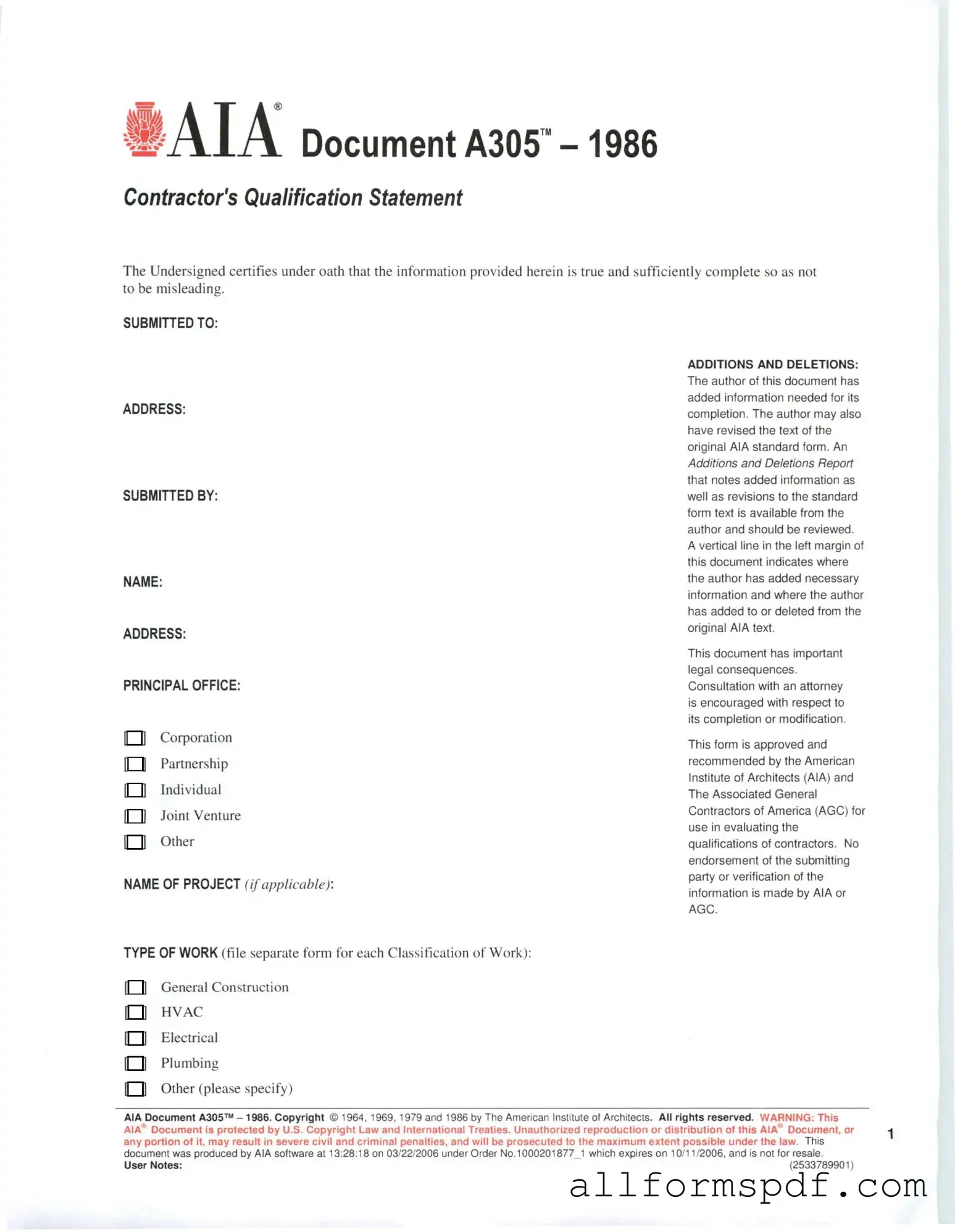Filling out the AIA A305 form, which is essential for contractors seeking to provide a statement of their qualifications, can be a daunting task. Many individuals make common mistakes that can lead to delays or even disqualification from a project. Here are ten frequent errors to watch out for.
First, many people overlook the importance of providing accurate contact information. It seems simple, yet incorrect phone numbers or email addresses can hinder communication. Ensure that all details are current and clearly stated.
Second, failing to update the form with recent project experience is a mistake that can cost opportunities. Contractors should include their most relevant and recent projects to demonstrate their capabilities effectively. An outdated project list may not reflect current skills or expertise.
Another common error is neglecting to provide complete financial information. Financial stability is crucial for any contractor, and incomplete data can raise red flags for potential clients. Be thorough and transparent about financial history.
In addition, many applicants forget to include references. Providing contact information for past clients or partners who can vouch for your work is essential. Without these references, the form may lack credibility.
Some individuals also fail to sign the form. It may seem trivial, but an unsigned document can lead to immediate rejection. Always double-check that you have signed and dated the form before submission.
Moreover, using vague language can be a significant pitfall. Specificity is key when describing experience and capabilities. Instead of saying “worked on various projects,” detail the type of projects and your role in them.
Another mistake involves neglecting to tailor the form to the specific project or client. A generic submission can suggest a lack of interest or effort. Customize your responses to align with the particular needs of the project at hand.
Additionally, many people fail to proofread their submissions. Spelling and grammatical errors can undermine professionalism. Taking the time to review your form can make a significant difference in how you are perceived.
Another frequent oversight is not following the required format. The AIA A305 form has specific guidelines for submission. Ignoring these can lead to rejection, so always adhere to the prescribed format and instructions.
Finally, some applicants underestimate the importance of including all required attachments. Missing documents can result in an incomplete application. Always double-check the list of required attachments and ensure that everything is included before submission.
